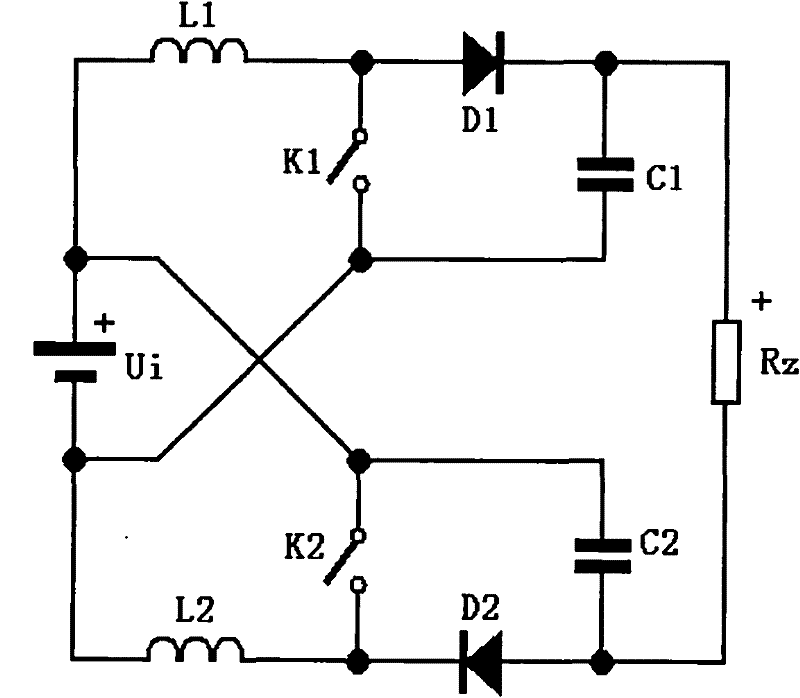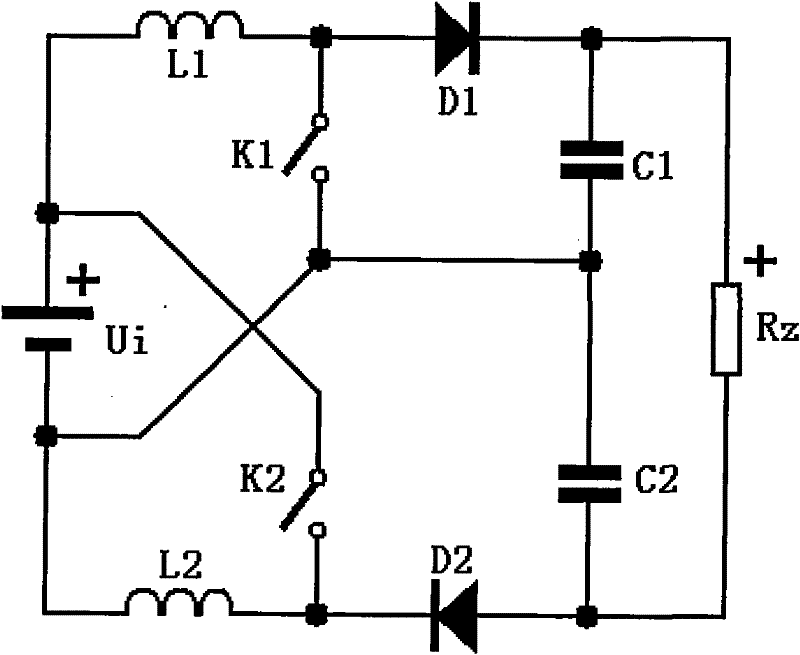Transform circuit adopting symmetrical cross-linked structure
A technology for converting circuits and cross-linking structures, applied in the field of converting circuits, can solve problems such as the lack of fundamental solutions, the deviation of the circuit from the high-efficiency working area, the expansion of device stress contradictions, etc., to achieve small internal resistance and loss, reduce voltage stress, application effect that works
- Summary
- Abstract
- Description
- Claims
- Application Information
AI Technical Summary
Problems solved by technology
Method used
Image
Examples
Embodiment Construction
[0027] Further details will be given below in conjunction with the accompanying drawings and embodiments of the present invention.
[0028] see figure 1 , is a circuit structure schematic diagram of the first embodiment of a conversion circuit using a symmetrical cross-link structure in the present invention, that is, a symmetrical cross-link Boost conversion circuit. The conversion circuit includes a power supply Ui, a first inductor L1, a second inductor L2, a first diode D1, a second diode D2, a first capacitor C1, a second capacitor C2, a first switch K1, and a second switch K2 and load Rz. The positive pole of the power supply is connected to the negative pole of the power supply through the first inductor, the positive pole and the negative pole of the first diode, the positive pole and the negative pole of the load, the positive pole and the negative pole of the second diode, and the second inductor in turn. The terminal is connected between the positive pole of the l...
PUM
 Login to View More
Login to View More Abstract
Description
Claims
Application Information
 Login to View More
Login to View More - R&D
- Intellectual Property
- Life Sciences
- Materials
- Tech Scout
- Unparalleled Data Quality
- Higher Quality Content
- 60% Fewer Hallucinations
Browse by: Latest US Patents, China's latest patents, Technical Efficacy Thesaurus, Application Domain, Technology Topic, Popular Technical Reports.
© 2025 PatSnap. All rights reserved.Legal|Privacy policy|Modern Slavery Act Transparency Statement|Sitemap|About US| Contact US: help@patsnap.com



